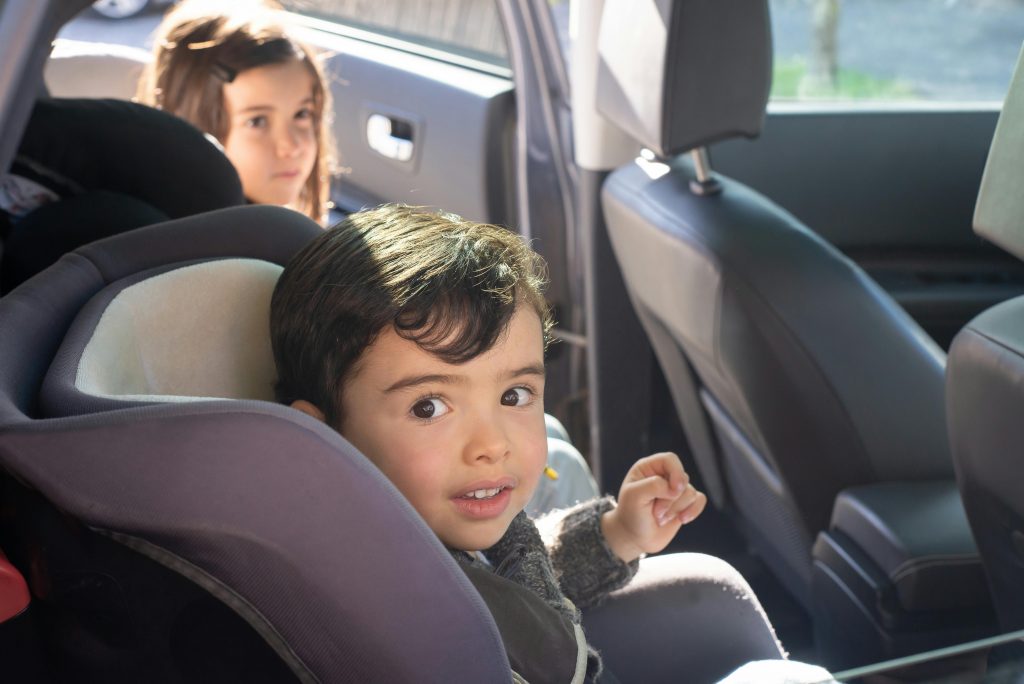Transitioning your child to a new car seat is an important milestone, but it can also be a source of stress for parents. Whether you’re moving from an infant car seat to a convertible seat or transitioning to a booster, ensuring your child’s safety and comfort is key. Here are some tips to make the process smoother and less overwhelming.

Know When to Transition
Understanding when it’s time to transition your child to a new car seat is crucial. Each type of car seat—infant, convertible, and booster—has weight, height, and age guidelines to ensure maximum efficiency and safety in the event of a car accident. Here’s a quick breakdown:
- Infant to Convertible Seat: Most infant seats are suitable for babies up to 30-35 pounds. Once your child exceeds the maximum weight or height limit, it’s time to switch to a rear-facing convertible seat.
- Convertible to Forward-Facing Seat: Children should remain in a rear-facing seat as long as possible, typically until they are at least 2 years old or reach the seat’s height or weight limit.
- Forward-Facing to Booster Seat: When your child outgrows their forward-facing seat (usually around 65 pounds), they can transition to a booster seat.
Refer to your car seat’s manual for specific guidelines.
Understand the Importance of Rear-Facing
The American Academy of Pediatrics (AAP) recommends keeping your child rear-facing until at least the age of 2, but ideally longer if they are within the weight and height limits of the seat. Rear-facing seats offer better protection for a child’s head, neck, and spine in the event of a collision.
Before transitioning to forward-facing, double-check that your child has truly outgrown their rear-facing seat. This precaution could save lives in the event of an accident.
Involve Your Child in the Process
As your child grows, they may have strong opinions about their car seat. Involving them in the transition can make the process more enjoyable and less intimidating.
- Let Them Help Choose: If they’re old enough, allow them to pick out a car seat with colors or patterns they like.
- Explain the Change: For toddlers and older kids, explain why they’re moving to a new seat. Highlight the exciting parts, like sitting “like a big kid” in a booster seat.
This involvement can help ease any resistance they might have.
Ensure Proper Installation
Proper installation is critical for car seat safety. Even the safest seat won’t protect your child if it’s not installed correctly.
- Read the Manual: Always follow the manufacturer’s instructions when installing a new car seat.
- Use a Certified Technician: Consider having the seat checked by a certified Child Passenger Safety Technician (CPST). Many local police or fire departments offer free car seat checks.
Don’t rush the installation process—take your time to ensure it’s done right.
Check for Comfort
A smooth transition isn’t just about safety; it’s also about keeping your child comfortable. If your child associates the new car seat with discomfort, car rides could become a struggle.
- Adjust the Straps: Ensure the harness is snug but not too tight, and check that it’s positioned correctly on your child’s shoulders.
- Add Supportive Accessories: Some car seats come with extra padding or headrests to keep your child comfortable. Make sure any accessories are approved by the car seat manufacturer.
Regularly check for comfort during rides, especially in the early days of using a new seat.
Stay Up to Date on Car Seat Laws
Car seat laws vary by state, and they may influence when and how you transition your child’s seat. Familiarize yourself with the regulations in your area to ensure you’re compliant. Some states have specific requirements for how long a child must remain rear-facing or in a booster seat.
Inspect Your Car Seat for Safety
Before using a new car seat, inspect it for any signs of damage or wear. If you’re using a seat passed down from a friend or family member, ensure it hasn’t expired and hasn’t been involved in an accident.
Also, register your car seat with the manufacturer so you’ll be notified of any recalls.
Practice Patience
Transitions can take time, and some children may resist the change at first. Be patient and consistent. Offer positive reinforcement, such as praise or small rewards, when they use the new seat without fuss.
Over time, your child will adjust to their new seat, and car rides will become more routine.
Transitioning car seats is an important step in ensuring your child’s safety and comfort as they grow. By staying informed and taking the right steps, you can make the process smooth and stress-free. Remember, safety comes first, but comfort and your child’s cooperation also play significant roles in a successful transition.
















Add Your Comment